1500 BC to 512 BC
The Indo-Aryan army presented here represents the military might of the Indian subcontinent from the end of the Harappan civilization in 1500 B.C. until conquest by the Persian invasion in about 550 B.C. The main force is a strong force of heroic charioteers, supported by the slightly-less noble cavalry and elephant troops, and followed by masses of common infantry.
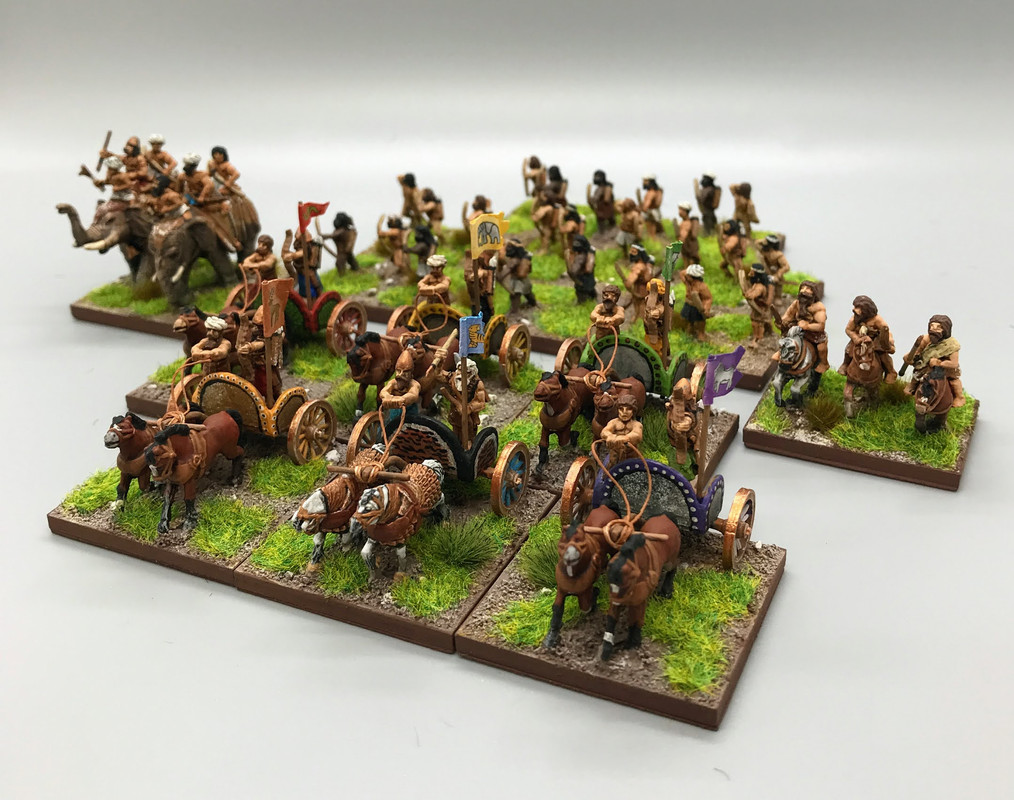
In Triumph! terms, the army is:
6 x Chariots, one is the General's stand = 24 points
1 x Elephant = 4 points
1 x Bad Horse = 3 points
8 x Bow Levy = 16 points
Pack Train and Herds battle Card = 1 point
For a total of 48 points
The single best source for information about this army is Ancient Indian Warfare with Special Reference to the Vedic Period by Sarva Darman Singh. All direct quotes in this post come from this book.
The models in this army are portrayed as having bronze weapons and armor. There are references in the later Vedic books to “black metal” which has been interpreted as meaning iron, so it would be plausible to paint them as iron if using troops allowed in the later parts of the lists such as elephants and limiting or omitting horde elements.
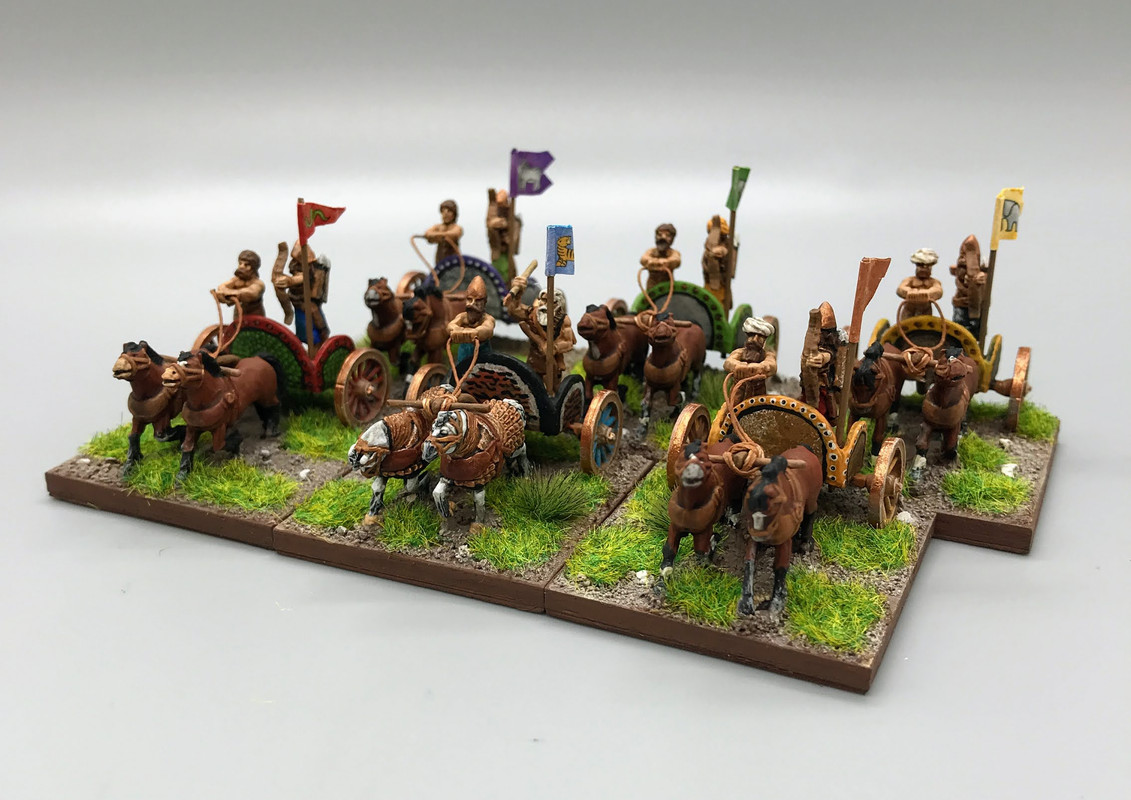

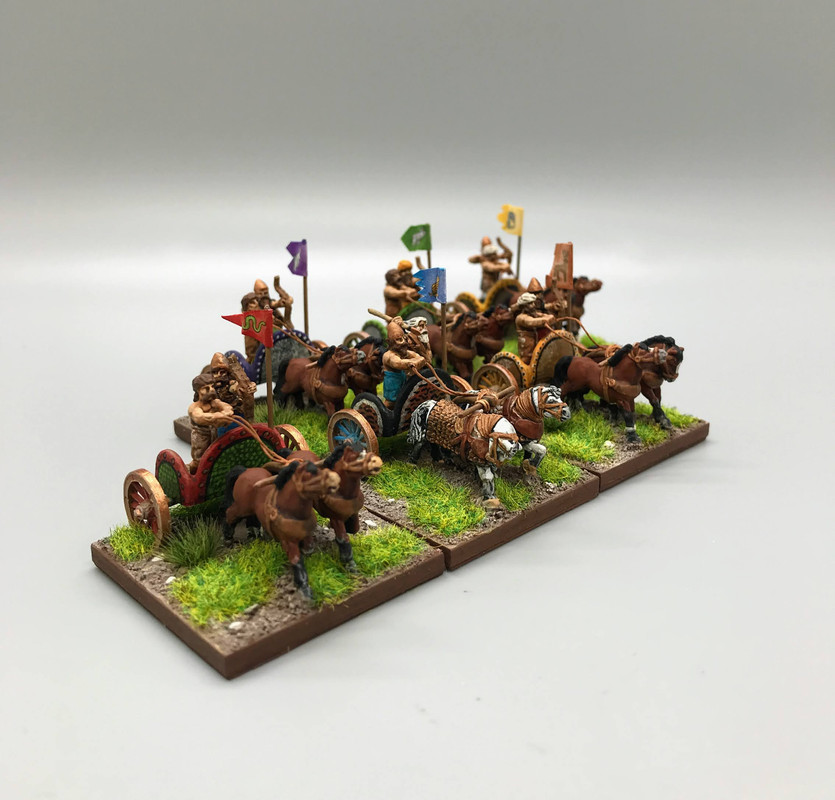
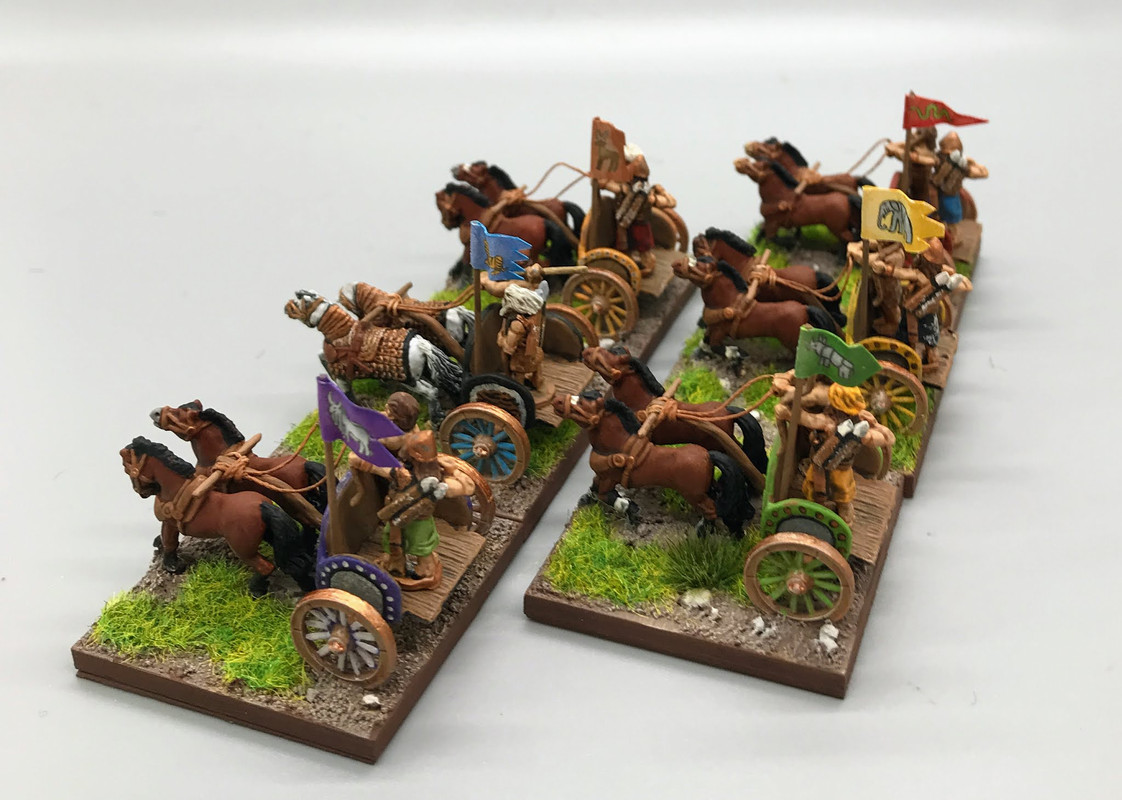
Chariotry. “His triumphant chariot rolls on, crushing everything in its way; foremost in the fight, on his car he earns treasures” (Singh, 31) There are two crewmen on each chariot, with the warrior standing on the left. Eash warrior has a composite bow, the “best beloved of a warrior's possessions, it was removed from the right hand of a dead man in the last act of the funeral rite”. (Ibid 92) The warriors wear a scale cuirass or breastplate made of bronze. We know they probably wore some kind of helmet, modeled here as simple conical helmets similar to those used by the Mitanni. In addition to the bow, the warrior “almost invariably wears a sword, besides his coat of mail and bow and arrows. (Ibid, 109) Each warrior also has two quivers of arrows on his back. Spears and javelins were also popular, so the General figure is equipped with a spear in his right hand and a bow in his left. There is reference to Indo-Aryans combing their hair (Rajadhyaksha, 1), so most of these troops have long hair.
The chariot driver has honorable status and may be a kinsman of the knight on the chariot. (Singh, 32) He wore a turban, with the upper part of his body naked, and probably carried no weapons. (Ibid, 33)
Chariot construction was similar to Egyptian methods, being made of wickerwork or leather on a light wooden framework with metal rims. (Ibid, 27) The Vedic chariot wheel typically had four to eight spokes, but there could be more especially for armies from the later part of the list. The chariot body has distinctive high rounded slides and front, taken from the Sanchi sculptures. The Sanchi sculptures are from the Mauryan era, but “ might reasonably hark back to the days of the Aryans”. (Ibid, 30) The chariot was also equipped with a seat for the warrior, and was hung with quivers for arrows and spears, although neither of those are modeled here.
Each chariot has a pole which is “surmounted by the hero’s ensign in the form of an image or emblem”. (Ibid, 40) Some example images listed are an ape, a palm tree, a stout cord, and an elephant; all these are personal and individual for the warrior. (Ibid, 40) The animal images used on the model flags are taken from Harappan seals, except for the snake which is clipart. Tiger skin coverings are mentioned for chariots, so for this army each chariot has a unique hide covering that reflects the image on the banner; the chariot with the elephant banner has sides made of elephant hide, the serpent banner has snake skin, the General’s chariot has tiger skin, etc. The flagpole was probably mounted at the back center of the chariot, but the poles on these models were moved to the front and left so they would not overhang the base.
The horses in the Sanchi carvings have elaborate harness and feather plumes on their heads. Although chariot horses were usually armored, I opted for horses with simpler harnesses in order to keep the attention on the warriors and banners. The General’s team is an exception and has horse armor similar to that used in Egypt. The General’s horses are white, a favorite in the Epics. ((Ibid, 43) The Epic describes horses of all possible colors, but the red horses of Sindhu are red, famous, and “coolly bear the blare of conches and the beat of drums, the twang of bows and the showers of arrows” and are heavily favored in this model army. (Ibid, 43)
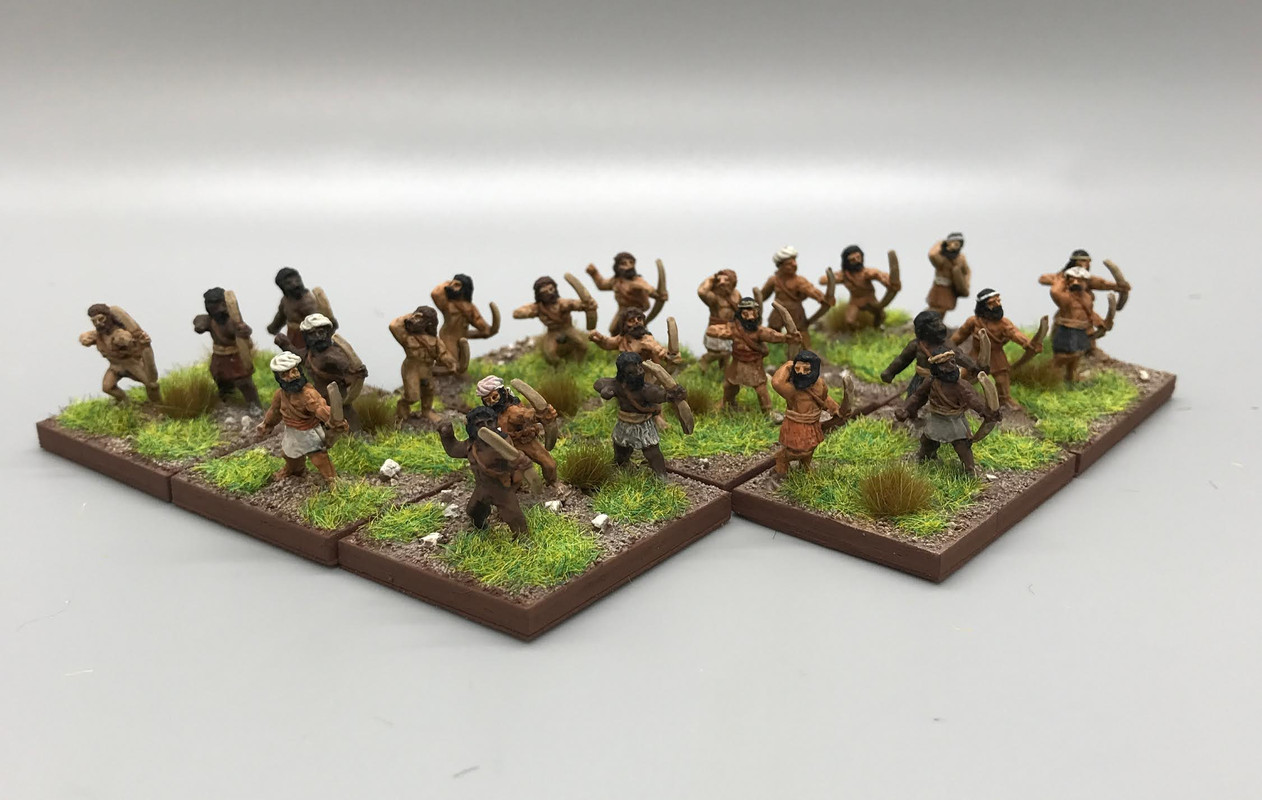
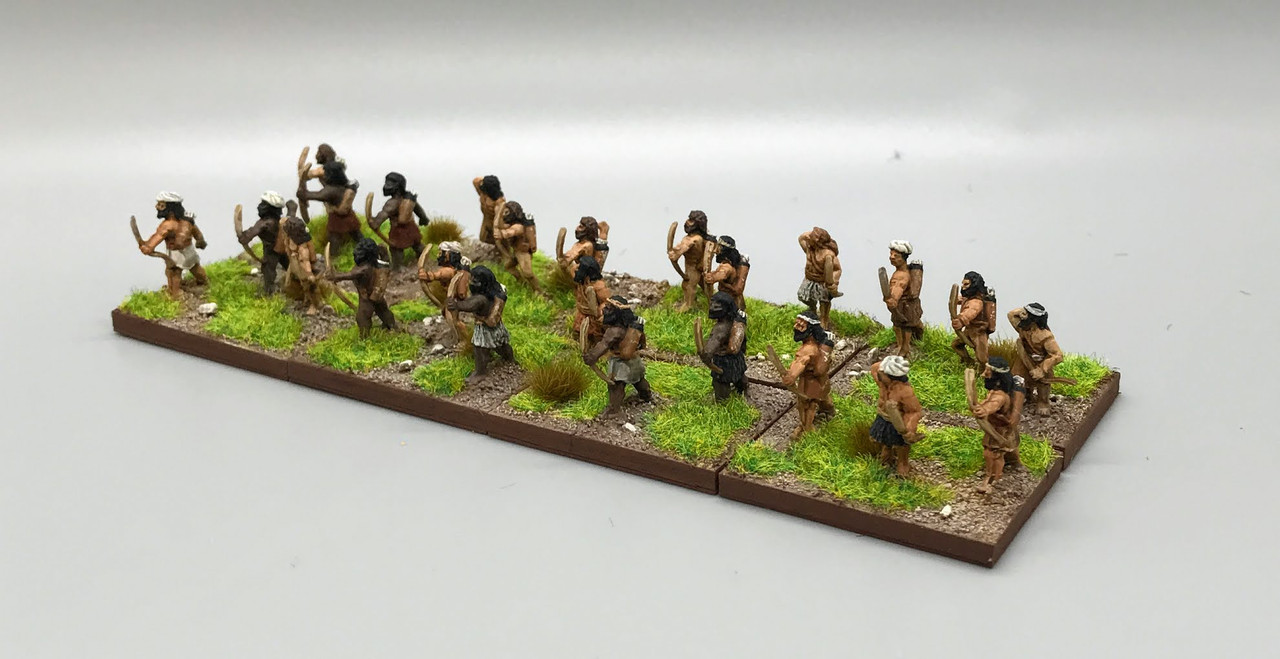
Infantry.
Infantry formed the most numerous arm of the Aryan forces and most of those were equipped with bow and arrow and did not use shields. (Ibid, 19) These bowmen are classified as Bow Levy in the rules, which is appropriate because “they serve only as fodder in the holocaust of war, to applaud a hero’s deeds and lament anothers fall”. (Ibid, 17)
Vedic hymns depict “the want and nakedness, poverty and misery of the average Aryan”. (Ibid, 65) Therefore most of these troops are naked or dressed in the simplest of clothing.
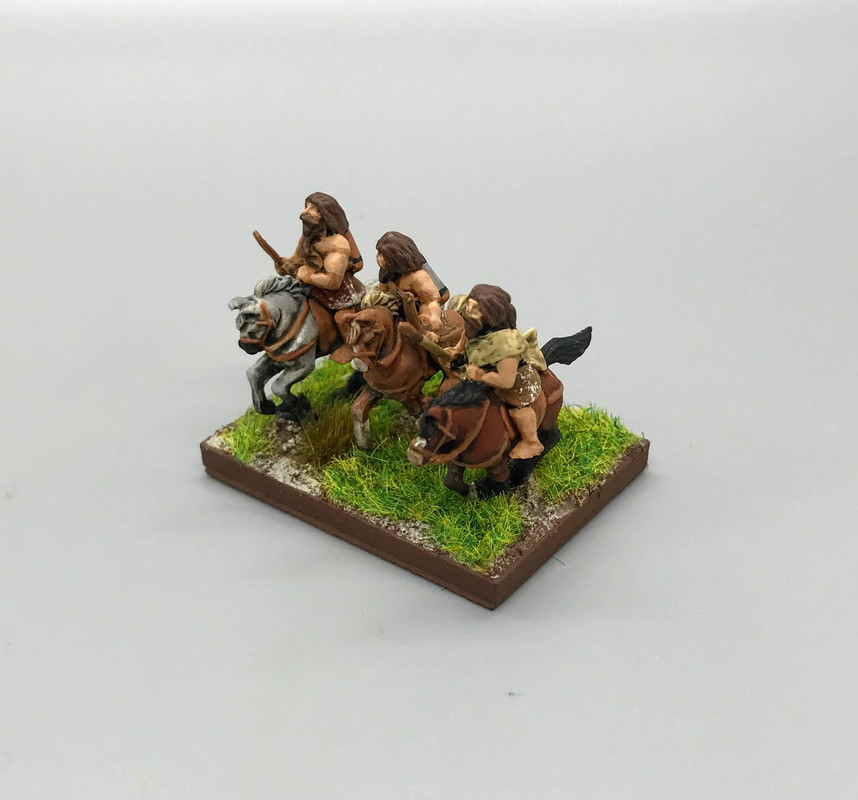
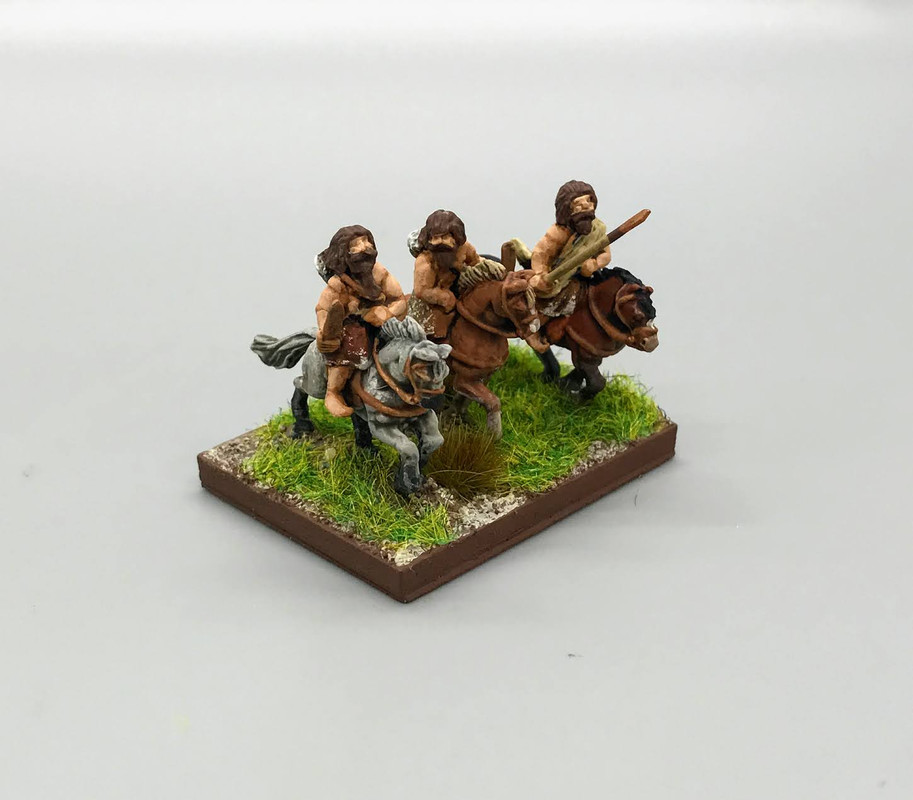

Cavalry.
Vedic cavalrymen were equipped with lances and swords, but “archery and horsemanship were not mutually incompatible…” (Ibid, 68) The figures on this stand are therefore equipped with lance, sword, and bow. They are classified as Bad Horse, given that “armed Vedic cavalry must have only been a light irregular force, excellent for skirmishing, harassing and terrifying by their shouts at gallop, and rounding up the booty of cattle and driving them home. (Ibid, 66) They had no saddle or stirrups. (Ibid, 70) They are wearng clothing made of animal skins, wool, or linen. (Rajadhyaksha, 1)
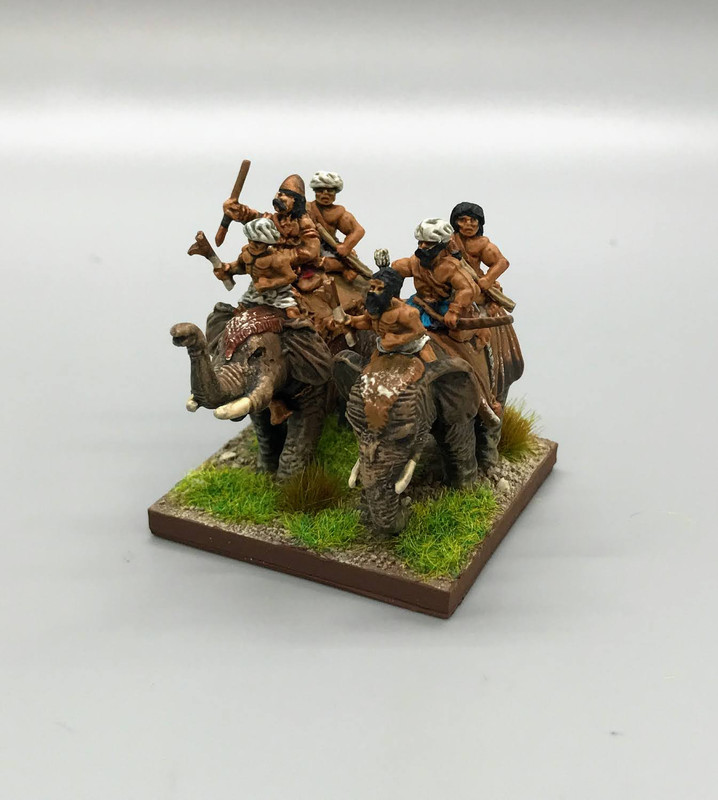


Elephants.
The war elephant, in this period, was ridden by “Kings and commoners”. (Ibid, 79) Kings and princes , however, principally ride on their chariots, and seldom on the backs of elephants. (Ibid, 81)
The elephant crew was anywhere from four to seven men. Two men were detailed to guard each leg. The crew were equipped with hooks, quivers (and presumably bows), banners, and lances. They were also equipped with “yantras”, which are stone or arrow throwing devices of some sort. The crew for these model elephants are more simply equipped with bows and javelins. One is a noble and equipped with scale armor and a bronze helmet like the chariot warriors.
Elephants were armored, probably with oxhide. There were no towers or saddles; instead elephants carried rugs on their backs. (Ibid, 80) They also had neck ropes and bells. (Ibid, 82)
Scatter Terrain.
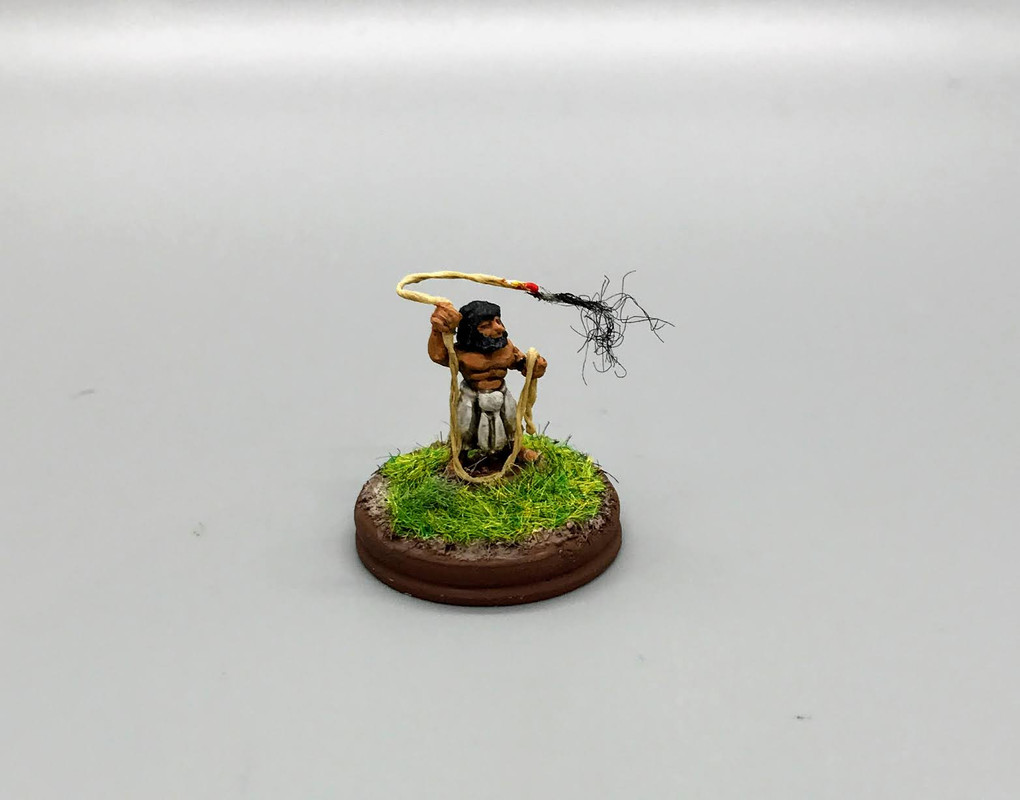
"The smoke of burning putrid rope was used to strike terror into the enemies hearts". (Ibid, 13)

"Raids for cattle and booty formed part of the normal business of life". (Ibid, 12)
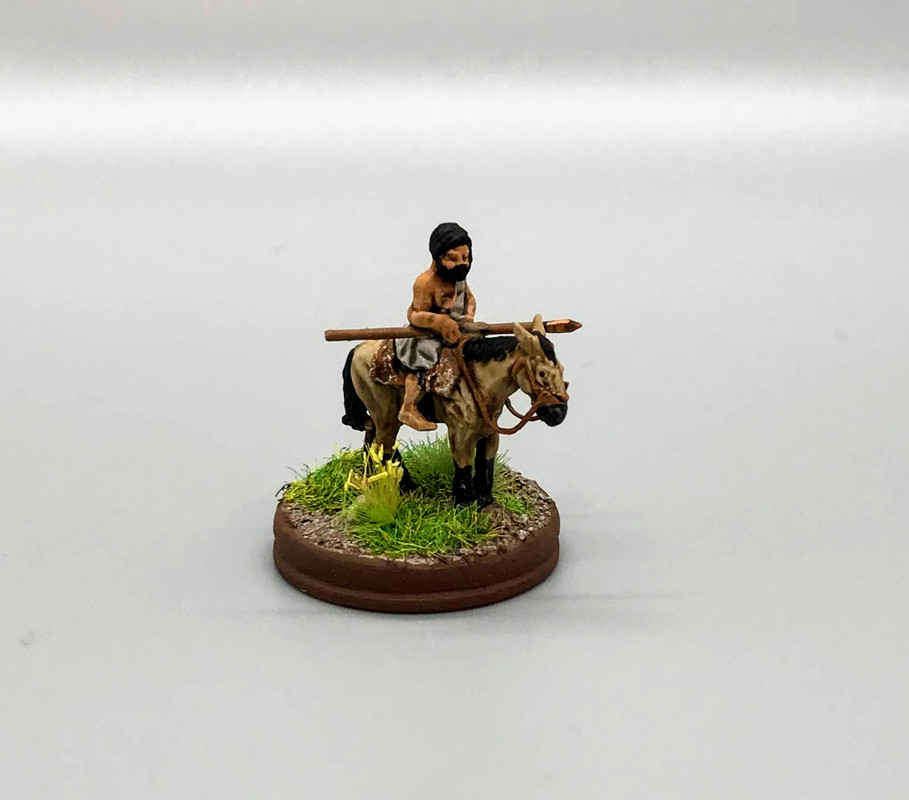
The Aryan migration was surely preceded by scouts, so this figure represents a weary horseman on an equally weary horse.
Notes on the Figures.
There are no 15mm Vedic Indian troops available on the market, so this army consists almost entirely of converted Old Glory figures.
Chariots
The Chariots are Classic Indians, with significant modifications made to the drivers and archers. The distinctive headband was cut off and replaced with long hair, helmets, or turbans. Dramatic beards and mustaches were added. The figures had a thin quiver on the left side, which would not do for such heavily armed warriors, so it was converted into a sword scabbard for their iron swords. Scale armor corselets were added to most of the warrior figures. The distinctive double quivers are spear ends from spare figures that were clipped off and flattened slightly before gluing to the back of the figure. Here is a photo of the chariot warriors after conversion but before painting:

The horses are Gladiator brand chariot horses, chosen for their simpler harness. The General’s team are New Kingdom Egyptian horses with the plumes cut off.
The General figure is a converted Classic Indian standard bearer.
The flags were made on a computer by my daughter, then printed at the office supply store on a high-quality printer. The flag poles are brass rods.
The cavalry are converted Egyptian Scouts inspired by this image, labeled “a typical Vedic warrior”, which accompanies Rajadhyaksha’s article.
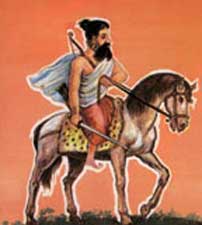
The elephant troops are converted from a Classical Indian pack, with the exception of a one elephant which is a converted Magister Militum model. The Magister Militum model had a tower, which was cast as a separate piece and easy to omit. The gap left on the back of the elephant was filled in with Green Stuff to make a thick pad. A section of triangular oxhide armor was added to the elephant’s forehead so it would match the Old Glory elephant. The chains supporting the tower were filed off and replaced with straps to match the Old Glory elephant. The crewmen were converted by adding turbans, long hair and beards/mustaches, and a helmet. The noble has Mitanni-style scale armor covering his chest.
The infantry are converted Old Glory Nubians, Amorites, and Berbers.
References.
Singh, Sarva Darman. Ancient Indian Warfare with Special Reference to the Vedic Period. E.J. Brill, 1965
Rajadhyaksha, Abhijit. A Brief History of India: Aryans. Web article from historyfiles.co.uk. 2019
